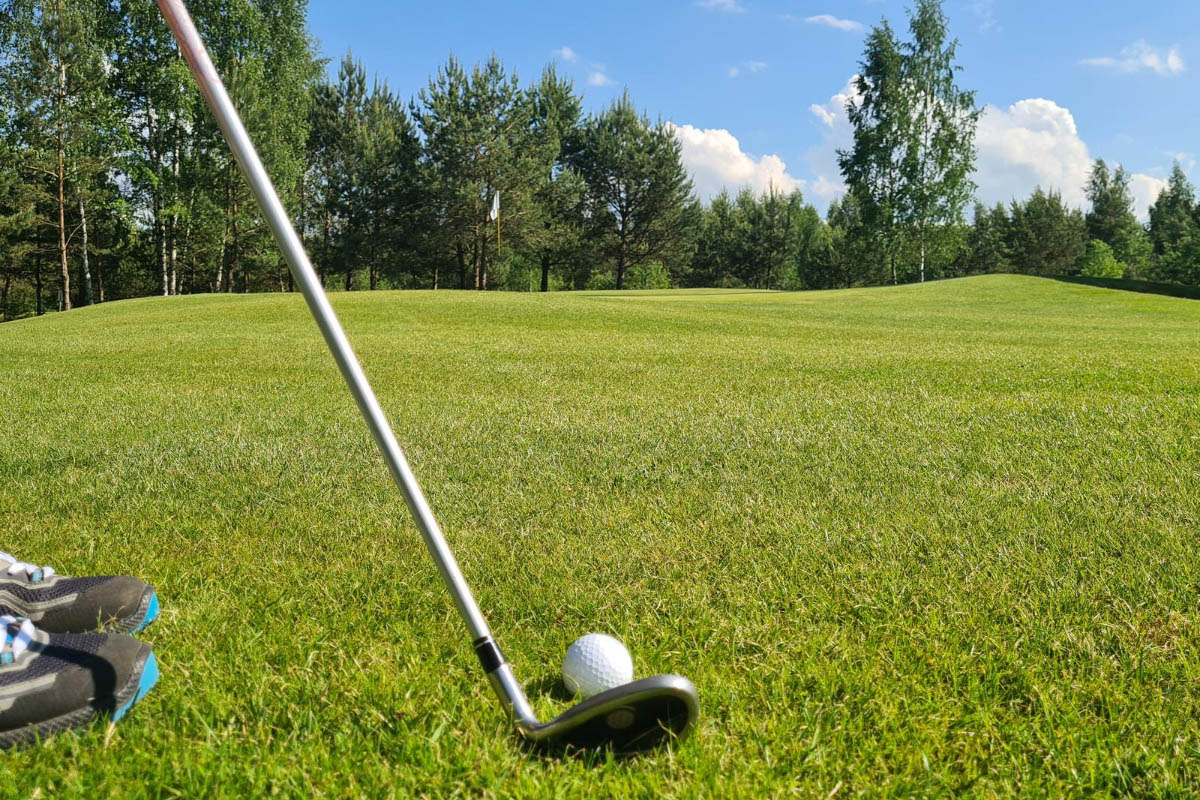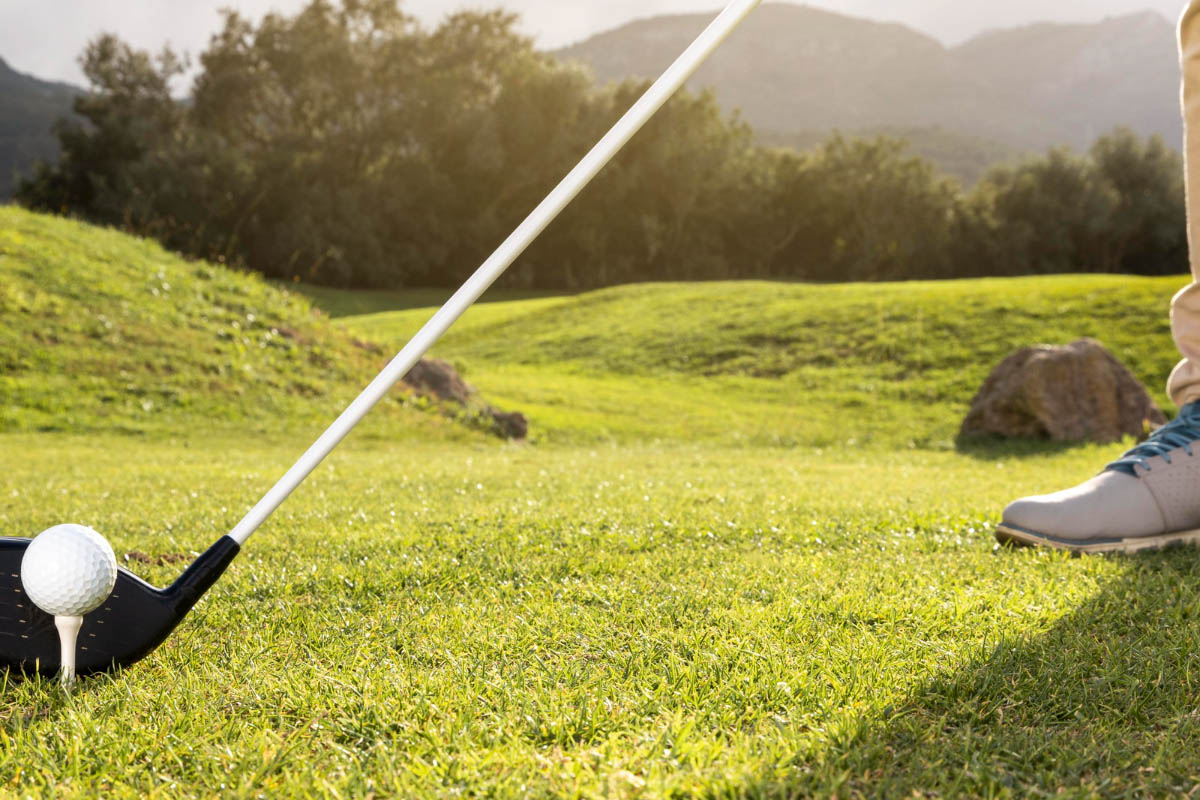
Golf is more about technique and mental strategy than physical capabilities, core strength, and stability. Incorporating functional golf exercises into your training regimen can significantly enhance your golf game by mimicking the movements you use on the course. Functional exercises help improve rotational power, balance, and flexibility, which are essential for a powerful and accurate golf swing. At Scottsdale Physical Therapy & Performance, we understand that integrating these exercises can lead to better performance, improved joint health, and reduced risk of injury. Here are seven essential functional exercises to improve your game of golf.
7 Essential Functional Exercises for Golfers
These key exercises for golfers target the specific muscle groups and movements used in golfing to enhance overall performance. Incorporating them into your golf strength training can improve strength, stability, and swing efficiency.
1. Quadruped Spinal Flexion & Extension
To perform this exercise, start on all fours with your hands directly under your shoulders and knees under your hips. Inhale and arch your back, allowing your belly to sink towards the floor and your head to tilt upwards (extension). Exhale and round your back towards the ceiling, tucking your chin to your chest (flexion). Repeat this movement in a controlled manner.
This exercise enhances spinal mobility, thoracic spine flexibility, and core stability, crucial for maintaining a proper golf swing posture and protecting the entire spine. Improved spinal flexibility can reduce the risk of back injuries and enhance overall swing performance.
2. Single-Leg Deadlifts
Stand on one leg with a slight bend in the knee. Hinge at the hips and lower your torso towards the floor while extending the other leg straight behind you. Keep your back straight and return to the starting position. Repeat on the other side.
Single-leg deadlifts build strength and balance in the lower body, specifically targeting the hamstrings, key muscle groups like the Gluteus Maximus, and core. This exercise enhances your ability to maintain stability and power through your swing, especially during dynamic movements, making it a vital part of golf power exercises.
3. Anti-Rotation Exercises (Pallof Press)

Position yourself at a right angle to a cable machine or resistance band anchor. Grasp the handle or band with both hands, bringing it close to your chest, and take a step away from the anchor until you feel tension. Extend the handle or band before you while maintaining a stable torso and resisting rotational movement. Return to the initial position and repeat the process. Research indicates that focusing on leg-hip power, trunk strength, and grip stability is particularly beneficial for enhancing golf performance; however, further studies are necessary to pinpoint the primary muscle groups and optimal movement patterns contributing to golf’s success.
The Pallof Press strengthens the abdominal muscles and improves rotational stability, vital for controlling the golf club during the swing. It helps prevent unwanted movement and enhances overall swing power.
4. Explosive Medicine Ball Slams
Stand with your feet shoulder-width apart, gripping a medicine ball overhead. Engage your whole body to slam the ball forcefully down to the ground while performing a slight squat. As the ball rebounds, catch it and repeat the motion. Golfers’ lumbar spines endure compressive loads during swings that reach up to 8 times their body weight. This highlights the critical need for exercises that bolster the core and lower body, ensuring support and protection for the spine.
This explosive movement develops power and coordination, mimicking the dynamic force generation required in a golf swing. It helps improve your ability to generate speed and power during your swing, contributing to longer drives and more controlled shots.
5. Plyometric Box Jumps
Stand before a sturdy box or platform with your feet shoulder-width apart. Bend your knees and hips to lower your body into a squat position, then explosively jump onto the box. Stand up straight on the box, then step back down and repeat.
Plyometric box jumps enhance leg strength and explosiveness, crucial for a powerful golf swing and effective weight transfers during play. They also improve your agility and coordination, helping you move more efficiently on the course.
6. Lateral Bounds
Start in a semi-squat position with your feet hip-width apart. Jump laterally to one side, landing softly and immediately returning to the starting position. Repeat the movement, focusing on quick, explosive jumps.
Lateral bounds improve lateral stability and rotational strength, which is beneficial for maintaining balance and power during your swing, especially when addressing limited hip mobility. This exercise also helps stabilize your hips and lower body, which is crucial for a consistent golf swing.
7. Shoulder Mobility Drills
Perform various shoulder mobility exercises such as arm circles, band pull-aparts, and shoulder dislocates using a resistance band or dowel. These movements should be done slowly and with control, focusing on increasing the range of motion.
Enhanced shoulder stability, especially in the shoulder capsule, is essential for a complete and efficient golf swing. These golf mobility exercises help increase flexibility and reduce the risk of shoulder injuries, ensuring a smoother and more effective swing.
Incorporating Functional Exercises into Your Routine
Integrate these functional exercises into a golf-specific training workout program to get the most out of these functional exercises. Aim to perform each exercise 2-3 times weekly as part of a routine, allowing adequate rest between sessions. Additionally, incorporating these exercises into your return to sport regimen can help you safely transition back to golf while enhancing your overall performance.
Frequency and Repetitions:
- Quadruped Spinal Flexion & Extension: Perform 2-3 sets of 10-15 repetitions on each side while maintaining engagement in your shoulder blades and keeping your palms flat for stability. This will help ensure proper muscle activation and the exercise’s effectiveness.
- Single-Leg Deadlifts: Complete 2-3 sets of 8-12 repetitions for each leg, ensuring your feet stay flat to maintain stability. This focus on stability will enhance your balance and strength during the exercise.
- Anti-Rotation Exercises (Pallof Press): Concentrating on resisting internal rotation will enhance your core stability and overall balance, positively impacting your clubhead speed. This focus will enhance your core stability and improve your overall balance.
- Explosive Medicine Ball Slams: Complete 2-3 sets of 8-12 repetitions, focusing on generating powerful movements. For optimal results, ensure that you maintain proper form throughout the exercise.
- Plyometric Box Jumps: Incorporate these functional exercises into a golf-specific training routine to maximize their benefits and enhance your performance, primarily by increasing driving distance. Aim for 2-3 sessions weekly, focusing on proper form and gradual progression in intensity.
- Lateral Bounds: Perform 2-3 sets of 10-15 repetitions on each side. This structure will help ensure balanced muscle development and stability, which is important for the kinetic chain during your golf swing.
- Shoulder Mobility Drills: Incorporating these functional exercises into your golf training routine can maximize performance gains and prevent golf-related injuries. Aim to perform each exercise 2-3 times a week, allowing for adequate recovery between sessions.
Executing each exercise with the correct proper form and technique is crucial to minimize the risk of injury and fully reap the benefits. To enhance your performance and safety, consider collaborating with a physical therapist or trainer who can guide you in mastering the proper execution of each movement.
Beyond Exercises: Additional Tips for Improving Your Golf Game

In addition to functional exercises, proper nutrition, hydration, and adequate mobility, especially hip mobility exercises, are essential for peak performance. Maintain a balanced diet rich in protein, carbohydrates, and healthy fats, and stay hydrated to support muscle function and recovery.
Regular practice and lessons with a golf professional can also enhance your game. They can provide personalized feedback and help you refine your technique, contributing to better performance on the course.
Mental focus, body awareness, and visualization play a significant role in golf. Practice visualization techniques to mentally rehearse your swings and stay focused during play, which can lead to improved consistency and performance.
Conclusion
Incorporating functional exercises into your golf training routine can significantly enhance your game by improving strength, balance, internal hip rotation, and flexibility, key elements of increasing club head speed. Focusing on these seven essential exercises will build the foundation for a powerful and accurate golf swing. At Scottsdale Physical Therapy & Performance, we help you optimize your physical performance and achieve your golf goals.
FAQs
What are functional exercises, and why are they important for golfers?
Functional exercises mimic the actions performed during your sport—in this case, golf. They are important because they improve the specific physical attributes required for your sport, such as strength, balance, and flexibility. This ultimately leads to better performance and reduced injury risk.
How often should I do these functional exercises?
For optimal benefits, incorporate these exercises into your routine 2-3 times weekly. Be sure to include rest days between workouts to facilitate recovery.
Can I do these exercises if I’m new to golf or fitness?
Yes, these exercises can be modified to suit your fitness level. Start with lighter weights or less intensity and gradually increase as your strength and technique improve. Consider consulting a fitness professional to tailor the exercises to your needs and capabilities.









